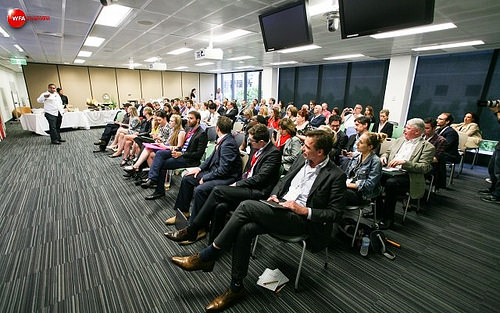US study reveals extent of advertising bot fraud
12/12/2014
Back to the overview
Almost a quarter of video ad impressions and more than half of third party-sourced traffic is fraudulent according to a study of bot fraud in the digital advertising industry by the Association of National Advertisers (ANA) and online fraud detection firm, White Ops'.
The ANA/White Ops study analysed 181 campaigns from 36 ANA member companies, which were tagged to identify bot fraud. During the study, 5.5 billion impressions in 3 million domains were measured over sixty days in line with industry spending patterns.
Bot fraud originates from malicious sites with phony ad traffic that passes through both legitimate and "phantom" elements of the digital advertising ecosystem. Fraudsters collect payments from advertisers for non-human impressions.
Top line findings from the study conducted in August and September 2014 include:
The study also revealed that bot fraud levels vary across the day with peak activity occurring when users are sleeping but their computers are still 'awake' (between midnight and 7am). Additionally, impressions coming from older browsers such as IE6 (Internet Explorer 6) and IE7 had fraud levels of 58% and 46%, respectively.
In response to the findings, the ANA, in collaboration with White Ops, has created an action plan for the key industry players – advertisers, agencies, publishers – to substantially reduce bot fraud. The action plan includes key tactical advice on how to structure business operations in a way that will protect against ad fraud. Among the recommendations are:
In all, 17 recommendations have been put forth to help fight bot fraud. For more information contact the ANA.
Sign up to monthly WFA news
The ANA/White Ops study analysed 181 campaigns from 36 ANA member companies, which were tagged to identify bot fraud. During the study, 5.5 billion impressions in 3 million domains were measured over sixty days in line with industry spending patterns.
Bot fraud originates from malicious sites with phony ad traffic that passes through both legitimate and "phantom" elements of the digital advertising ecosystem. Fraudsters collect payments from advertisers for non-human impressions.
Top line findings from the study conducted in August and September 2014 include:
- Botnet controllers hijack everyday consumers' identities and home machines to conduct ad fraud
- Almost a quarter (23%) of video ad impressions were identified as bot fraud
- 11% of display ad impressions were classified as bot fraud
- Publishers who bought sourced traffic from a third party as a means to drive additional unique visitors to their site, had a bot fraud rate of 52% on that sourced traffic
- Programmatic display bot traffic averaged 17% bot fraud
- Bot fraud for retargeted ads was 19%
The study also revealed that bot fraud levels vary across the day with peak activity occurring when users are sleeping but their computers are still 'awake' (between midnight and 7am). Additionally, impressions coming from older browsers such as IE6 (Internet Explorer 6) and IE7 had fraud levels of 58% and 46%, respectively.
In response to the findings, the ANA, in collaboration with White Ops, has created an action plan for the key industry players – advertisers, agencies, publishers – to substantially reduce bot fraud. The action plan includes key tactical advice on how to structure business operations in a way that will protect against ad fraud. Among the recommendations are:
- Advertise during waking hours
- Demand transparency for sourced traffic
- Include language on non-human traffic in terms and conditions
- Announce your anti-fraud policy to all external partners
- Use independent monitoring and conduct ongoing fraud analysis of advertising traffic
In all, 17 recommendations have been put forth to help fight bot fraud. For more information contact the ANA.
Sign up to monthly WFA news















































































